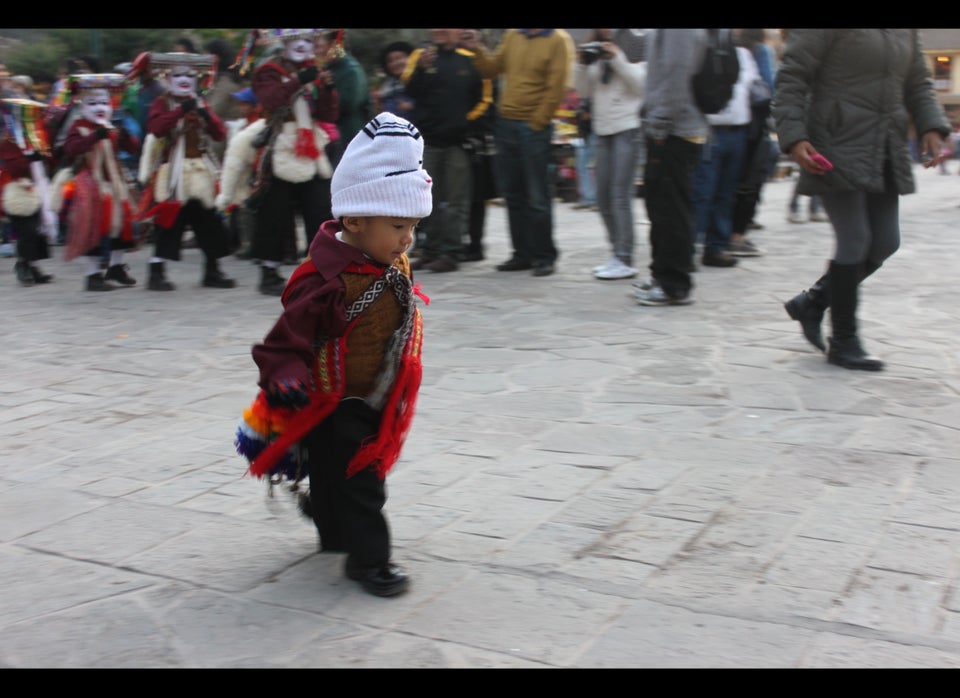
The littlest drunk, who can't be more than five years old, raises his beer high above his head and stutter steps, catching himself with the heel of his boot. He looks around to see if anyone has noticed, nervous that he's interrupted the step-step-slide of his fraternity's dance. If the men behind him notice, they don't let on. Line dancing in their grinning, big-nosed masks, they look determinedly headed for an anti-semitic hoedown or a reunion of Doonesbury characters.
They are actually church-bound and, though their rhythmic shambling is convincing, most of them are stone sober.
Senor de Choquekillca is a strange sort of festival. A religious celebration in honor of a small town boy made saint that has morphed into an occasion for trans-generational venting, Choquekillca provides the citizens of the small town of Ollantaytambo with an occasion to dress up in white face and mock the conquistadors who destroyed the Inca civilization flourishing in this part of the Peruvian Andes. The Spanish were as vicious to the people of the Sacred Valley as they were Catholic -- which is to say very -- but the dances are more dismissive than accusatory.
The message seems to be this: These intoxicated zealots who conquered us didn't understand our way of life, which we should celebrate by drinking outside a church.
The cast is massive and includes large, roving bands of drunks, monsters, beautiful women, knights in mesh masks and colorfully-garbed Quechua people who cram into the ancient, stone town center with celebrants from nearby villages and even Cusco. There are cockfights in the alleys, but they are well hidden. A mummy that has something to do with the Pentecost is held aloft. A local leader carries an image of Jesus through the streets.
From a traveler's perspective, the whole proceeding is unintelligible because, while the locals speak clear Spanish, the entire event is the product of two societies that have nothing in common except their members.
The Senor de Choquekillca is, after all, a local deity, the lord of an area of river where one young man tripped and nearly fell off a cliff before grabbing a strategically place root. When the man looked down at the river he saw a cross and when he managed to climb to safety, he became a devout Christian. The Choquekillca is a pagan deity who stands in for god's grace, a sort of metaphysical understudy for the sake of this pageant, which it is hard to imagine the Pizarro's troops embracing.
That is what is great about the party: Like history itself, it doesn't really make sense.
Peru's Christian faith is a spoil of war, but no less genuine for being coerced. Likewise, the Incan culture is mourned despite being obviously extant. Unlike westerners, who more often than not see multiculturalism as the amalgamation of different peoples, the people of the Sacred Valley -- inundated though they are by Machu Picchu-bound travelers -- are multicultural on the inside, contradictions be damned.
It is hard not to love a people not only capable of holding contradictory ideas in their heads, but willing to celebrate them in concert. The drunks here are not only underage, they're sober. Almost everyone is wearing a mask.
